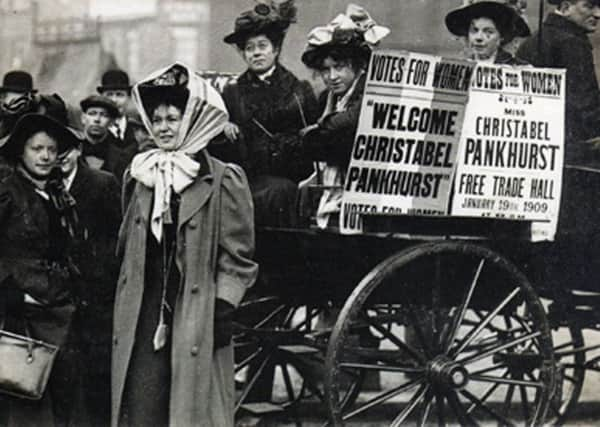These photos celebrate the Leeds women who changed history


But next week, as the country marks 100 years since some women were granted the vote in a landmark moment for equality, Isabella Ford, Mary Gawthorpe and Leonora Cohen will be among the trailblazers who will be celebrated and granted their rightful place in history.
It was on February 6, 1918 that the Representation of the People Act gave the vote to women over 30 who met certain property criteria.
Advertisement
Hide AdAdvertisement
Hide AdThe same Act gave the vote to all men over the age of 21 – and it wasn’t until 10 years later that the voting age for women was lowered to 21 as well.
The campaign for female suffrage had its roots in the 19th century and a number of women from Leeds were among its earliest champions.
They were part of a wider group of firebrand campaigners from across Yorkshire which included Lavena Saltonstall from Hebden Bridge, Dora Thewlis from Sheffield and Florence Lockwood from Huddersfield.
Among Leeds’s early heroines for democracy and enfranchisement was Isabella Ford.
Advertisement
Hide AdAdvertisement
Hide AdBorn in 1855 in Leeds into the prosperous Ford family of Adel Grange, in 1890, Isabella helped form the Leeds Women’s Suffrage Society.
She collected more than 30,000 signatures on a giant Yorkshire women textile workers’ suffrage petition, which she then helped take down to Westminster.
Emmeline Pankhurst had founded the Women’s Social and Political Union (WSPU) in Manchester in 1903, and in 1905, Christabel Pankhurst (Emmeline’s daughter) and fellow suffragette Annie Kenney interrupted a Liberal meeting in the city’s Free Trade Hall to demand votes for women.
After the pair were jailed, the news flew over the Pennines and Isabella Ford was galvanised into action.
Advertisement
Hide AdAdvertisement
Hide AdFord’s biographer June Hannam describes her as “a truly remarkable woman of her age, she had considerable impact upon the forerunners of today’s political movements”.
By the time of her death in 1924, she was an internationally respected authority on suffrage issues.
Another leading suffragette with Leeds links was Mary Gawthorpe, a school-teacher from Bramley, who was equally inspired by Christabel Pankhurst’s imprisonment.
Despite her modest beginnings, she was a passionate and fearless campaigner. In a letter, she described the Pankhursts’ actions in Manchester as “the clarion note…I heard and answered that call instantly...if it was necessary to go to prison in order to win the vote, I was ready”.
She was also massively media savvy.
Advertisement
Hide AdAdvertisement
Hide AdA correspondence had started between Christabel Pankhurst and Mary Gawthorpe, and Mary bombarded the Leeds press with letters demanding the vote. She also resigned her job to become a WSPU organiser.
Mary Gawthorpe’s story lay almost hidden for many decades after her death in 1973.
She died in America, where she had emigrated to.
Her descendants had sat on the papers for 30 years after her death, and eventually deposited them in a library in New York.
It was only when Dr Jill Liddington, a University of Leeds professor and extensive writer on the Yorkshire suffragette movement, discovered them during a trip to the USA that her story was able to be told properly.
Advertisement
Hide AdAdvertisement
Hide AdAnother key figure in the Leeds suffragette movement was Leonora Cohen. She came into the suffrage battle late in the day, but quickly made her mark. It wasn’t until late 1911 and Prime Minister Herbert Asquith’s declaration that he was going to introduce men’s suffrage rather than women’s suffrage that she was spurred into action.
She went on to become a famously passionate and militant campaigner in the early 20th Century. In 1913, she was arrested and jailed for hurling an iron bar through a showcase at the Tower of London.